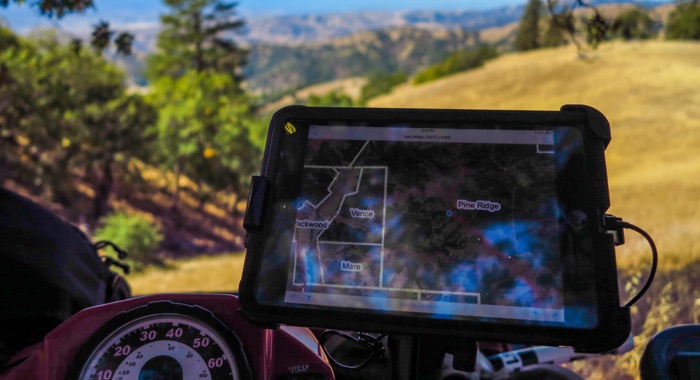A third of California is privately-owned forestland, woodland or grassland. From redwood forests on the north coast to oak savannas in the foothills, these “working wildlands” harbor native plants and animals and natural resources that shape California’s cultural and economic identity. The agricultural goods produced in these landscapes feed into a global market – from beef and dairy to building materials. Rangelands also help recharge groundwater. Healthy forests enhance water quality.
Harvest practices that are unsustainable, however, or conversion of these landscapes to more intensive land uses, can degrade habitats and reduce the flow of important benefits to people.
Working wildlands are what keep California stitched together ecologically. Their continued economic viability is key to the persistence of the ecological benefits they provide. Conservancy scientists work to figure out how to protect and enhance the function of these landscapes – as a critical network for nature.

D. Richard Cameron, David C. Marvin, Jonathan M. Remucal, Michelle C. Passero
Combatting climate change will require using all available tools, especially those that contribute to other societal and economic goals, such as natural resource protection and energy security.…Carolyn M. Malmstrom, H. Scott Butterfield, Laura Planck, Christopher W. Long, Valerie T. Eviner
Invasive weeds threaten the biodiversity and forage productivity of grasslands worldwide. However, management of these weeds is constrained by the practical difficulty of detecting small-scale…Carrie Schloss, Elizabeth O'Donoghue, Christa Cassidy, Tom Robinson, Serena Unger, Adam Garcia, Dan Rademacher
The Bay Area Greenprint tool provides land use and infrastructure agencies, consultants, and advocates easily accessible, interpretable, and scientifically robust information on habitat and ecosystem…Kristen Wilson, Erik Lowe, Stacey Wolny, Barry Nickel , Rodd Kelsey
This study demonstrates how science-based planning with stakeholder input can improve and direct conservation investments across existing state and jurisdictional boundaries. The authors set out to…Gary L. Ivey, Caroline P. Herziger, David A. Hardt, Gregory H. Golet
Understanding the geographic distribution and long-term dynamics of Sandhill Crane (Grus canadensis) foraging areas and night roost sites is fundamental to their conservation and management. The…Derek Young
A century of fire suppression has dramatically altered the structure and composition of western U.S. forests. When dense, fire-suppressed forests experience wildfire, they often burn severely. To…Matt Miller, Dick Cameron
Cameron DR, Marty J, Holland RF
This study assesses the amount of rangeland conversion between 1984 and 2008 in California. The researchers analyzed data from the California Farmland Mapping and Monitoring Program to see where…M. Rebecca Shaw, Kirk Klausmeyer, D. Richard Cameron, Jason MacKenzie, Patrick Roehrdanz
Species will move around the landscape as the climate changes, presenting challenges for traditional conservation strategies like land acquisition. This paper models the cost and total land area that…Jennifer Carah, Jason Pelletier
A two-page summary of salmon restoration efforts at the Garcia River Forest on the North Cost of California focusing on the reintroduction of wood in streams as a strategy.The Nature Conservancy, Jennifer Carah
Salmon and trout thrive in streams with cool water, low levels of sand and silt, and deep, shaded pools. Intensive forest management in California over the last 150 years led to the removal of these…Jordan Golinkoff, Mark Hanus, Jennifer Carah
The voluntary carbon market is a new and growing market that is increasingly important to consider in managing forestland. Monitoring, reporting, and verifying carbon stocks and fluxes at a project…Marty, Jaymee T.
Livestock grazing in the American West often conjures up images of cattle degrading riparian areas or spreading weeds throughout desert rangeland. But cattle grazing does not always or necessarily…